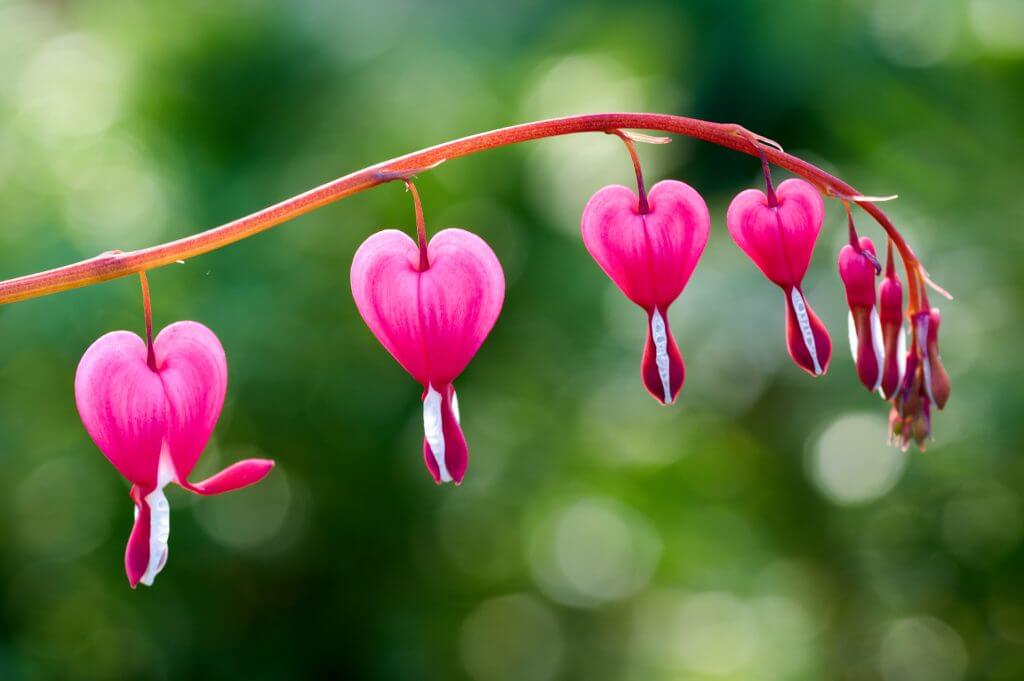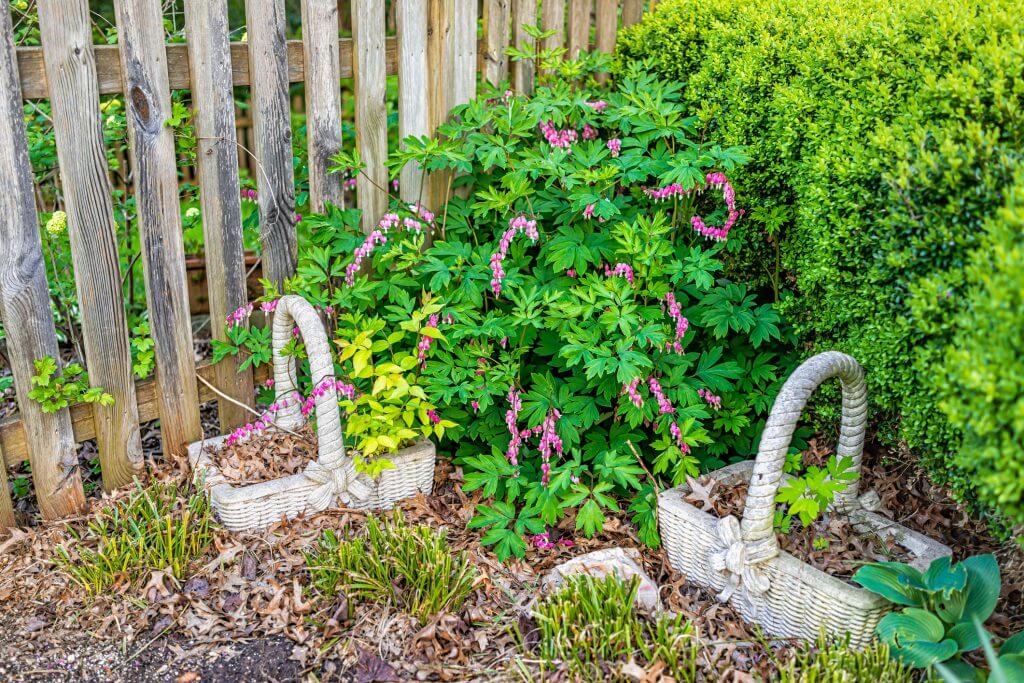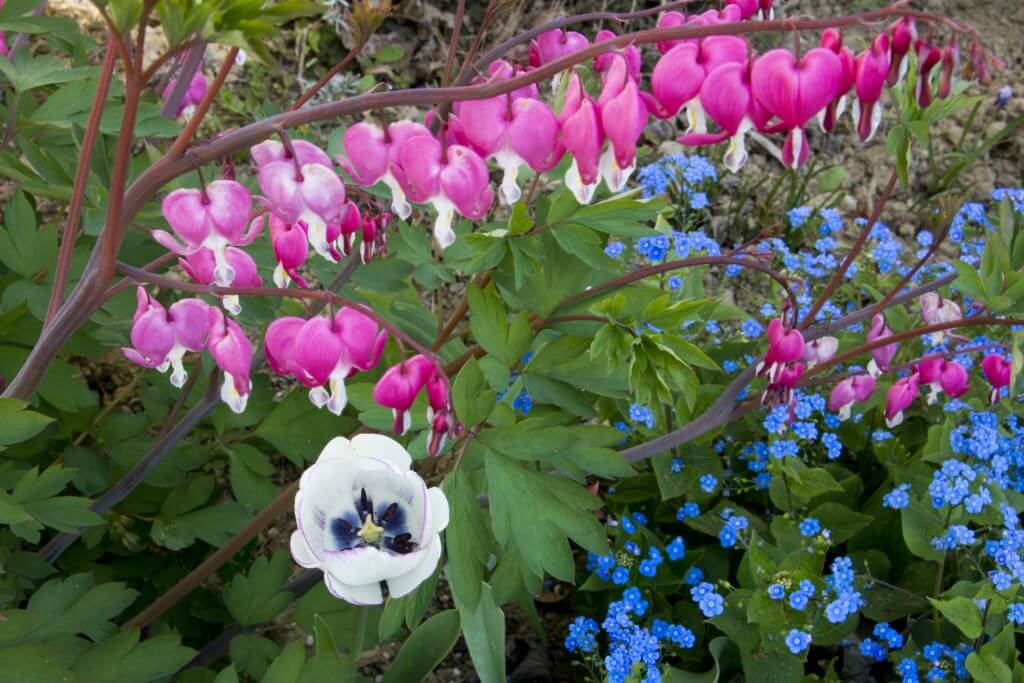Add something interesting to your landscape in spring with bleeding heart plants.
The colourful blooms of this plant hang like heart pendants along its stems, perfectly complemented by its bluish-green foliage.

The Basics of Bleeding Heart Plant
Bleeding heart or Lamprocapnos spectabilis is a species of a flowering plant family Papaveraceae. The bleeding heart is the lone species in the genus Lamprocapnos.
The bleeding heart plant used to be referred to as Dicentra spectabilis. Its other common names include Asian bleeding-heart, heart flower, lady-in-a-bath, and lyre flower.
This flowering perennial is native to Northern China, Siberia, Japan, and Korea.
The bleeding heart can grow to about 47 inches (120 cm) tall and 18 inches (45 cm) wide. There are also compact bleeding hearts that grow to about 1 to 1.5 feet (30 to 45 cm) tall and wide.
This herbaceous perennial is rhizomatous or has creeping rootstocks, meaning it has stems that grow under the ground where roots come out of its nodes.
The heart flower has arching horizontal stems from where its lovely pendant heart-shaped blooms show in spring to early summer.
Since it is native to colder regions, bleeding heart plants can sometimes behave as spring ephemerals and goes dormant in the summer. They usually come back after dormancy.
The bleeding heart blooms come in bright pink, purple, or fuchsia with white inner petals.
Some cultivars of the bleeding heart include ‘Alba,’ which has white flowers. There’s also ‘Gold Heart’ with yellow blooms. The ‘Valentine’ cultivar is red and white.


Planting Your Bleeding Heart Plant
Bleeding heart plants like cool and moist climates.
Choose a position for your plant that is in full or partial sun. Choose a cool and part-shade location if you have warmer and drier climates.
Remember that bleeding hearts prefer rich, slightly alkaline, damp, but not soggy soil.


Planting Bleeding Heart from Seeds
If you will harvest its seeds for planting, get them while they are fresh and plant them immediately. You can also allow your bleeding hearts to self-sow by leaving the seeds on the plant.
Plant seeds about have an inch (1.25 cm) deep. Keep the soil of your bleeding heart seeds moist until the first frost.


Planting Bleeding Heart from Division or Rootstock
Division or asexual plant propagation should be done in early spring or late autumn.
You can take root cuttings in spring, but remember that bleeding heart’s roots can be brittle, so take care when you divide them.
To plant divided plants or rootstocks of your bleeding heart, plant with the roots pointing down and spread out.
The part where new foliage is supposed to sprout, called the “eyes,” should be about one inch or 2.5 cm below the level of the soil surface. Take care not to plant it too deeply, or it may not grow and just rot.
Give your bleeding hearts space by planting them about 2 to 2.5 feet (60 to 76 cm) apart.
Water deeply to let the soil settle around the roots.
Whether you are planting from seeds or division, mark where your bleeding hearts are located.


Caring for Your Bleeding Heart Plant
Bleeding hearts are easy to care for and maintain.
Since bleeding hearts can die back and may not leave a trace above ground, mark your plants’ locations. This will help you keep track where they are and not disturb the soil when they are beneath ground level.
You can also prune and cut your bleeding heart back to the ground as they turn yellow and wilt.
Keep your bleeding hearts in a rich and moist soil. Water regularly from spring to before winter, but take care not to make it soaked. Keep them watered especially in summer.
Feed a time-release fertiliser around new growths in spring.


Common Problems with Bleeding Heart Plant
Bleeding hearts can be susceptible to common garden pests such as slugs, snails, and aphids.
Protect your bleeding heart, especially younger plants, from slugs and snails.
Use natural pesticides to remove aphids. Keep in mind that bleeding hearts can be sensitive to soap-based products, so test your insecticide on a few leaves first.
Bleeding hearts can sometimes get diseases such as verticillium wilt, downy mildew, or rust and fungal leaf spot.
[elementor-template id=”4604″]
[elementor-template id=”6387″]
